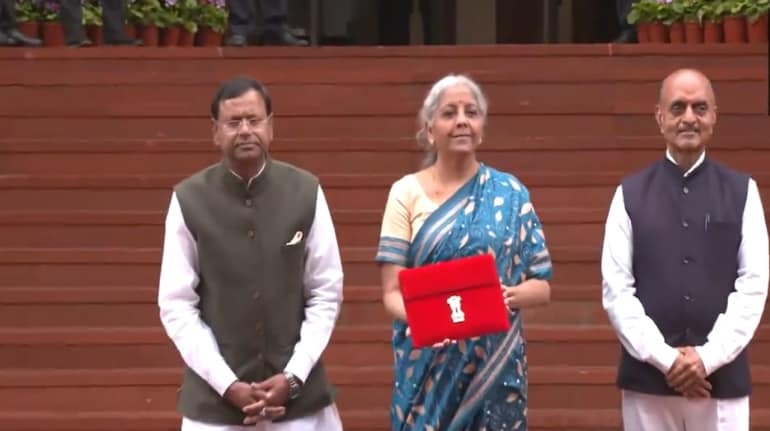 ET Online
ET OnlineThe forecast
Rating agency ICRA has upgraded its GDP growth estimate for the second quarter of the current fiscal on the back of higher government spending in September. ICRA, which had pegged the growth rate at 7.7%, has now upgraded it to 7.9%. The Reserve Bank of India has forecast a growth rate of 7.9% for the real GDP. "Economic activity in Q2FY22 was supported by a pick-up in industrial and service sector volumes after the second wave of Covid-19 subsided and rising vaccine coverage revived confidence,” its chief economist Aditi Nayar said.
Tanvee Gupta Jain, Economist at Swiss brokerage UBS Securities has said that the UBS Activity Tracker has shown an upward trend. UBS has forecast that India’s GDP in the September growth should see a growth of around 8-9%. But on the recovery front, Gupta-Jain says India isn’t really seeing a broad-based recovery. “We are seeing a mixed recovery in India, definitely not a broad-based recovery. But we are expecting improvement in demand-side indicators including vehicles, property, home and personal care and consumer durables,” she says.
"From the worst ever recession which we saw last year when the economy declined 7.3%, this year we are seeing a 9.5% GDP growth. I would say that is largely due to a favourable base. The actual rebound on the ground has been muted."
Teresa John, Economist at Nirmal Bang Institutional Equities forecasts the GDP growth for Q2FY22 at around 7%. John notes that the government support for the rural sector is slowly being withdrawn. “This implies that rural growth is likely to slow going ahead which could pose some headwinds for growth, but may be offset at least partially by a recovery in urban demand,” John says.
SBI Research has said that the forecasted GDP growth for Q2 would be around 8.1% (with upward bias) while Q2 GVA is estimated at 7.1%. India’s projected 8.1% growth rate in Q2FY22 is the highest growth across all economies, it said in its note.
Current situation and challenges for Indian economy
Inflationary pressures remain a global concern in a market pressured by supply chain worries. “Raw material prices have risen but the pass-through to retail prices is far from complete. The rise in retail prices of consumer staples and discretionary products may also weigh on demand,” John says.
Owing to the sudden outbreak of COVID-19 in 2020, India’s GDP shrank 7.3% in FY21 but has since been on a path to recovery. But despite the recovery, Gupta-Jain believes that the actual rebound in economic growth on the ground has been muted. Although she does point out the fact that due to the emergence of the first and the second wave of COVID-19, the Indian government was forced to focus on getting people vaccinated and getting the economy back on track, rather than focusing on new growth drivers.
“Even though the government used the pandemic to announce a lot of long-standing reforms the implementation is still lagging. We still have to wait out for next year to see whether and how quickly the reforms announced are finally being implemented,” she said.
"The supply recovery has lagged the recovery in demand, but supply is bound to catch up. A case in point is crude oil where prices have begun to ease with improving supply"
Gupta-Jain further flags the fact the formal economy has gained market share during COVID-19 and that the unorganised informal economy has suffered which is definitely not captured in the GDP numbers seen so far.
Inflation worries?
John says the supply chain bottlenecks that have pushed up inflation globally are likely to ease with time. “While inflationary pressures may sustain over the next few quarters, we do not believe that there is a structural change in the inflation outlook. Emerging from a pandemic, consumers are unlikely to throw caution to the wind while spending which will keep a lid on demand-side pressures on inflation. Policymakers are likely to be tolerant of slightly higher than target inflation in the interim, and not view it a big threat, but slightly faster normalization cannot be ruled out,” she adds.
 ET Online
ET OnlineBetween 2009 and 2013, the average inflation in India was around 9.9%. Gupta-Jain believes things are different now, thanks to sustained capex spending by the Centre and state governments. “The government seems to be on a path to fiscal consolidation. Data shows capex spending by the Centre is in double-digits, in-line with the Budget estimate. Public capex spending is happening on the ground unlike in the previous years. As consumption slows down and you need a new growth driver, it is capex and somewhat real estate recovery which is being seen.
The road ahead
On the demand front, Gupta-Jain opines that the pent-up demand seen now will moderate by March 2022. Vaccination rates might increase, people will want to spend money, they will want to avail themselves of high contact services. It is going to fade as we move towards FY23. For FY22, UBS has forecast a 9.5% YoY growth. SBI Research estimates that the FY22 GDP growth rate for India could be between 9.3-9.6%.
India Q2 GDP preview: Signs economists will be looking for - Economic Times
Read More

No comments:
Post a Comment